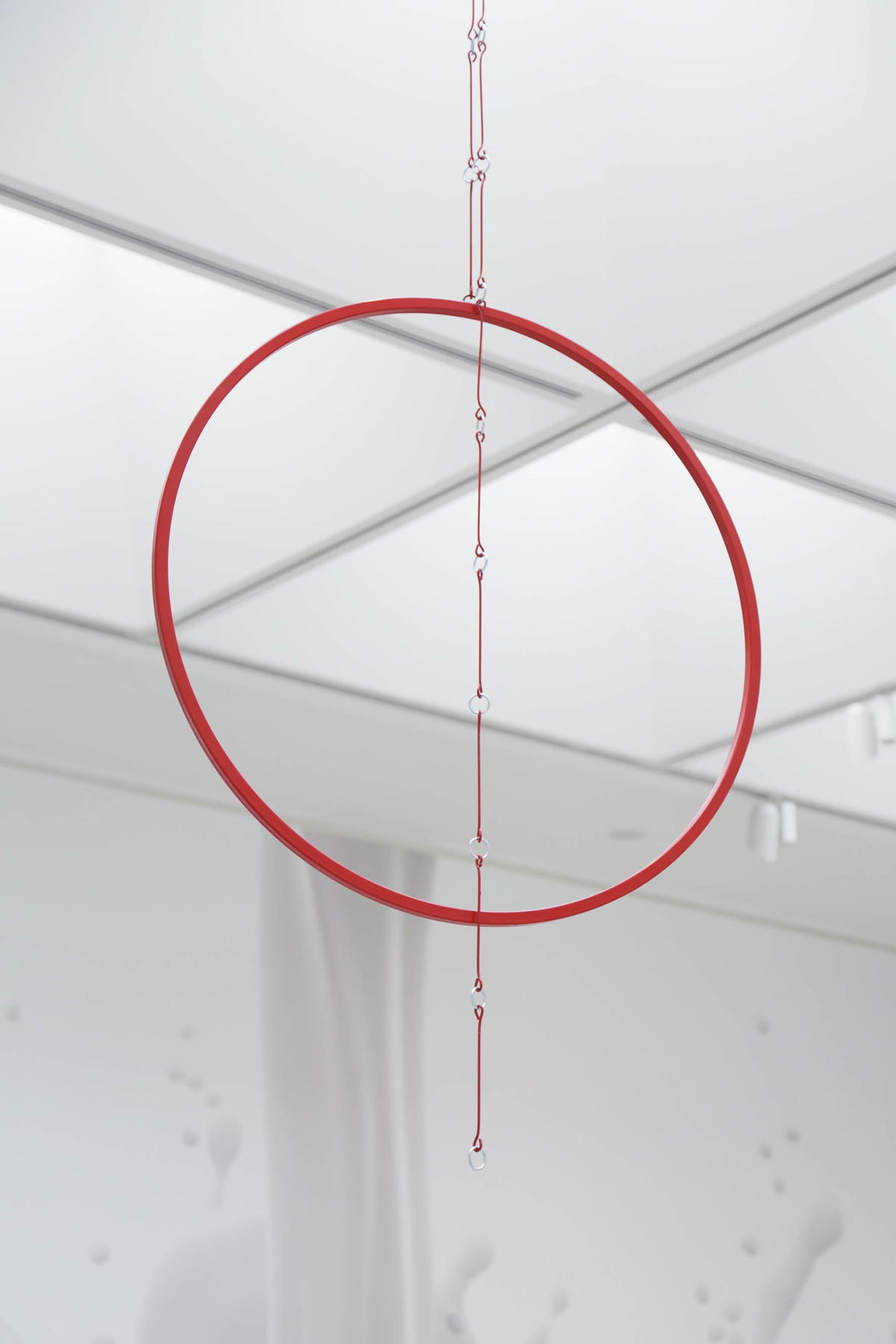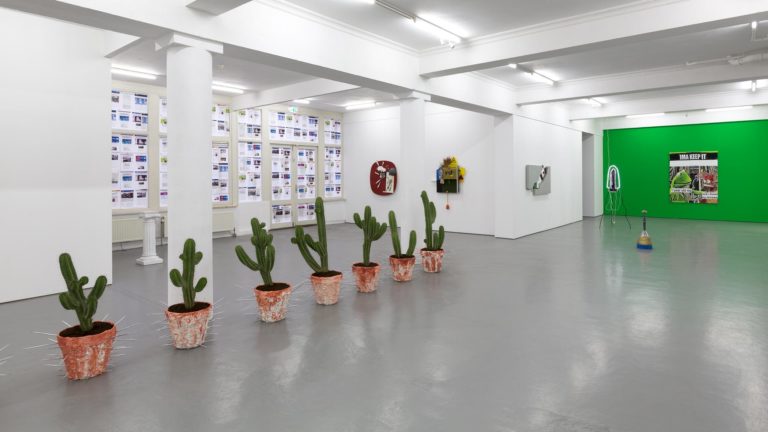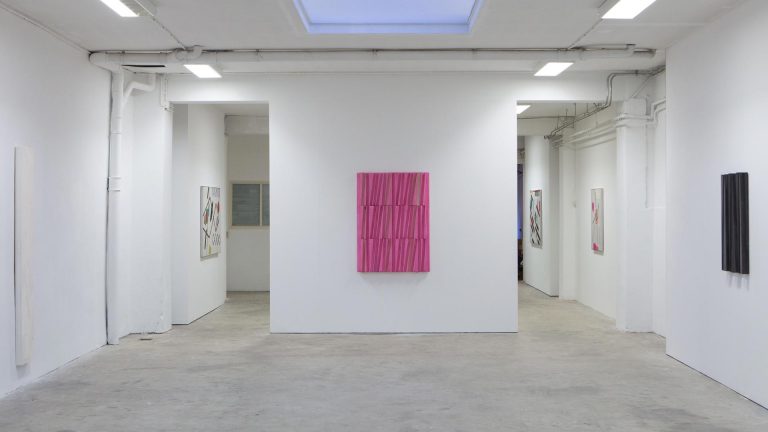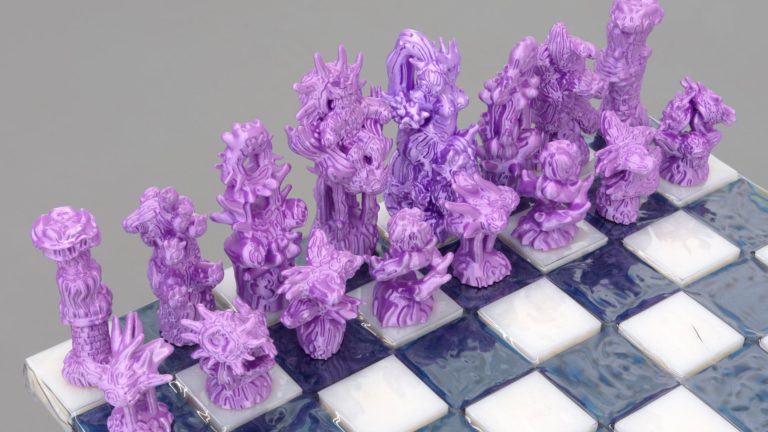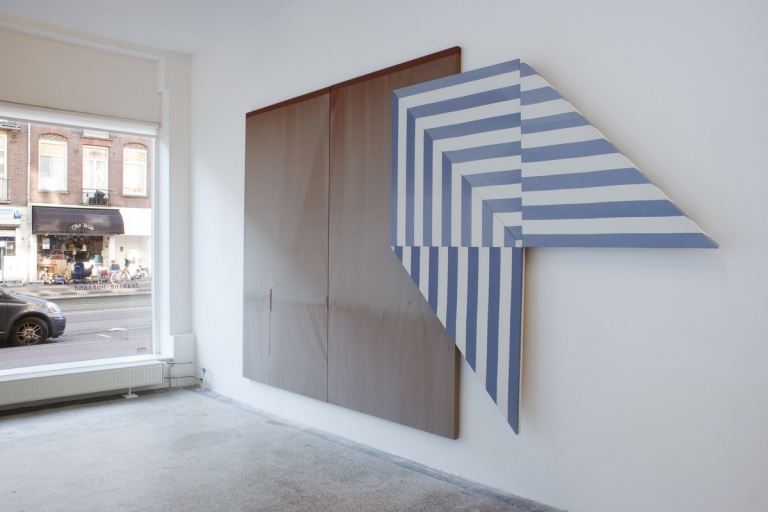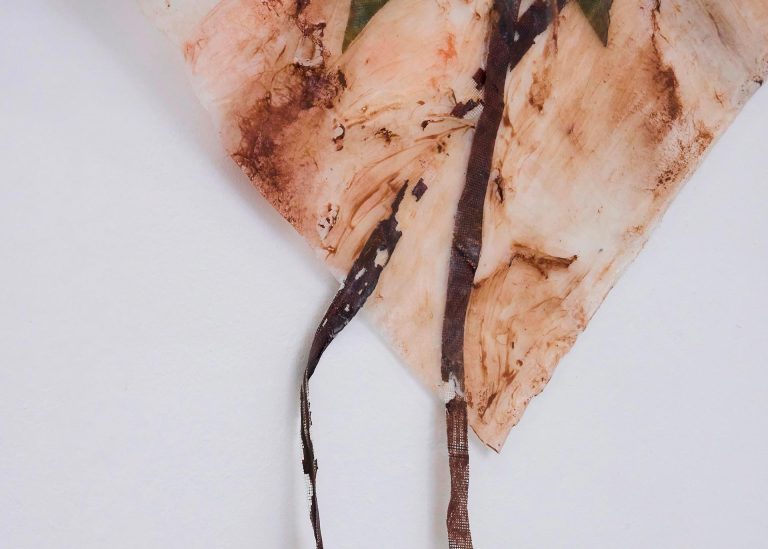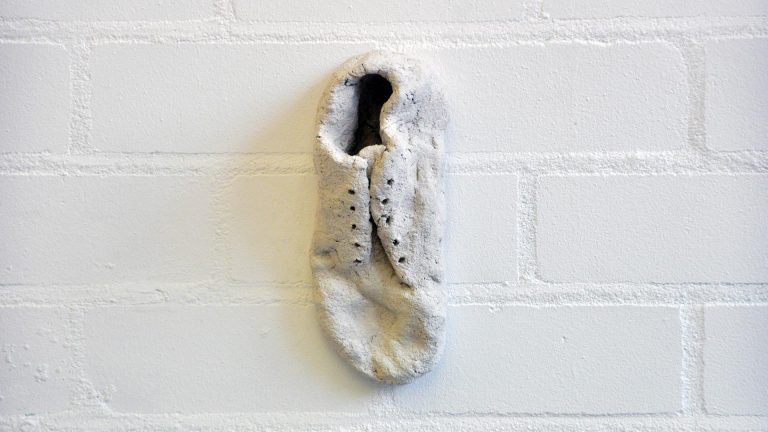Artist: Eric Giraudet de Boudemange
Exhibition title: the story of water, milk and peewit eggs
Venue: Fries Museum, Leeuwarden, The Netherlands
Date: July 1, 2017 – January 7, 2018
Photography: all images copyright and courtesy of the artist and Fries Museum
French artist Eric Giraudet de Boudemange’s (1983) fascination with folk rites and games has brought him to many different places, including Friesland, where he encountered fierljeppen, ‘pole jumping over ditches’. The sport is believed to have originated with farmers who used poles to leap over small water drainage channels to access different plots of land. His curiosity for this phenomenon is manifested in performances, sculptures and videos.
The works in this exhibition are based on Giraudet de Boudemange’s experiences with the Frisian landscape. They combine ancient traditions and myths with current developments such as the intensification of agriculture. Together, the artworks form a new ‘landscape’ for visitors to wander around in.
In 2015, the Museum of Friesland bought two of his works: a video about fierljeppen and an installation of colourful fenpole sculptures. These artworks can be seen in combination with existing and new works by this artist. Together they offer an adventurous view of the Frisian landscape.
mapping
Fierljeppen is a way to break the monotony of the tamed landscape. In this exhibition you therefore walk about on an abstract map of a landscape. The metal structures indicate the route through this landscape. Like the egg hunt, these routes criss-cross the countryside. The iron shapes on the wall represent the moon and the lunar cycle. Together, these elements form the landscape in which the other artworks come to life.
Illusions of the Frisian Landscape – Illusions of the Frisian Landscape, five fenpole sculptures, in collaboration with Oane and Ysbrand Galama, 2015
Giraudet de Boudemange created these five fenpoles after he learned fierljeppen (pole-jumping over ditches) in Friesland. The sculptures on the fenpoles symbolise the relationship between fierljeppen and the annual egg hunt in spring. Egg hunters carefully follow the routes of birds to find their nests. Because birds navigate by the stars and planets, in a sense the egg hunter does the same. In one of the sculptures, therefore, bird and man come together.
measuring the land – Geodesic chains, metal, paint, 2017
Several measuring chains are spread through the space. They are modelled on chains that were used to measure the landscape in Friesland during the 15th century. At that time, measurements were made in Koningsroeden (‘King’s rods’), an old Frisian size standardised in 1815 at almost four metres. These were important tools, because the size of the ground determined the tax one had to pay.
transformation of traditions – Hobby ornithologist, video-installation, digibirds, 2017
Another Frisian tradition as old as the egg hunt is hunting for golden plovers, in Frisian: wilsterflappen. At the time golden plovers were an expensive delicacy. The hunters, wilsterflappers, caught them with decoy birds, a net and a small whistle. When it was banned in 1976, the wilsterflappers transformed from gold seekers into bird-watchers. In the exhibition, digi-birds represent the decoys. They are activated by the wilsterflapper’s whistle.
a game between body and landscape – Players, silicone rubber, 2016 -2017
The cartoonesque sculptures in this exhibition are castings of the artist’s body. They are presented in action, frozen at the highest point of a jump over water, or at rest. The flexible ‘skins’ create a link between the artist’s body and the landscape, with fierljeppen as a game that unites them.
taking off – Mesure du Paysage, video, 2015
Ysbrand Galama taught Giraudet de Boudemange the finer twists and turns of fierljeppen. Being a multiple champion, Galama was the perfect teacher. In this film, Giraudet de Boudemange edited his attempts to overcome the water into a rhythmic sequence. It comes down to speed, power and a precise estimation of the number of steps required for the jump. And the goal? Air in your hair, and the intense sensation of soaring upwards into space.
eggs – Incubo-meters, wood, paint, water, 2017
During one of his walks, Giraudet de Boudemange was introduced to the ins and outs of ‘lotteren’. To make sure an egg was not collected the year before, during the egg hunt it is put into water. If it sinks, then it’s fresh. This is also a way to determine when an egg will hatch. The boxes of water in this exhibition contain a fake egg. Egg hunters often carry these with them. If a female peewit finds out that her nest has been robbed, she will never return, so the ‘nest robber’ exchanges the real egg for a fake one.
myths of the landscape – Frisian Garden of Delight, video, 2017
The text in this film is based on a variety of sources, including fragments from 17th-century songs. Giraudet de Boudemange was also inspired by the Oera Linda Book, a fake history of the Frisians. The film connects the Frya’s (Frisians) legendary flight to the water to migratory behaviour of birds and the rationally ordered landscape. In the film, the poetic combination of texts and images forms a new myth of the landscape.
land of milk and honey
Farmers strive for maximum milk production to maintain their competitive position. In order to provide stabled cows with fresh spring grass, the grass is mowed in the breeding season. The wide-scale mowing leaves little room in the meadows for biodiversity. When mowing, the birds’ nests must also be protected. Now that the egg hunt is forbidden, egg hunters have transformed their activities into guarding nests from the harvesters’ scything blades.
-Judith Spijksma
Eric Giraudet de Boudemange is an alumnus of the National Academy of Fine Arts in Amsterdam (2012/2013). Prior to that, he graduated from the Ecole National Supérieure des Beaux-Arts in Paris (2007) and Le Fresnoy, studio national des arts contemporains (2011). His work has been presented in various group and solo exhibitions, including at De Appel in Amsterdam, Galerie Waldburger/Wouters in Brussels, Fondation d’Entreprise Ricard and Centre Georges Pompidou in Paris. He travels around the world to satisfy his deep curiosity for rites and games. He uses his experiences as inspiration for his artworks. For his art he has learned an obscure darts game from French miners, and deer hunting and pigeon breeding. The stories he tells are about history, politics, folk culture, pop culture, landscapes and biology.


















